Cedar Point is a 364-acre (147 ha) amusement park located on a Lake Erie peninsula in Sandusky, Ohio, United States. It opened in 1870 and is considered the second-oldest operating amusement park in the US behind Lake Compounce. Cedar Point, which is owned and operated by Cedar Fair, is the flagship of the company's amusement park chain. Known as "America's Roller Coast", the park features 16 roller coasters, which ranks third among amusement parks in North America behind Six Flags Magic Mountain (20) and Canada's Wonderland (18). Cedar Point's normal operating season runs from early May until Labor Day in September, which is followed by weekend-only operation through Halloween during an annual event known as HalloWeekends. Other amenities and attractions featured within the park include a one-mile-long (1.6 km) beach, an outdoor water park named Cedar Point Shores, an indoor water park named Castaway Bay, two marinas, and an outdoor sports complex called Cedar Point Sports Center.

Hersheypark is a family theme park in the eastern United States in Hershey, Pennsylvania, about fifteen miles (25 km) east of Harrisburg, and 95 miles (155 km) west of Philadelphia. The park was founded in 1906, by Milton S. Hershey as a leisure park for the employees of the Hershey Chocolate Company. It is wholly and privately owned by Hershey Entertainment and Resorts Company. Hersheypark has won several awards, including the Applause Award.
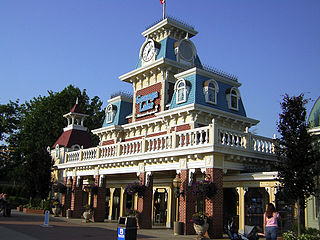
Geauga Lake was an amusement park in Bainbridge Township and Aurora, Ohio. It was established in 1887, in what had been a local recreation area adjacent to a lake of the same name. The first amusement ride was added in 1889, and the park's first roller coaster – the Big Dipper – was built in 1925. The park was sold to Funtime, Inc., in 1969 and was expanded over the years with additional rides and amenities. Funtime was acquired by Premier Parks in 1995, and for the 2000 season, they re-branded Geauga Lake as Six Flags Ohio, adding four new roller coasters. The following year, Six Flags bought the adjacent SeaWorld Ohio and combined the two parks under the name Six Flags Worlds of Adventure.

Knoebels Amusement Resort is a family-owned and operated amusement park, picnic grove, and campground in Elysburg, Pennsylvania. Opened in 1926, it is United States's largest free-admission park. The park has more than 60 rides including three wooden roller coasters, three steel roller coasters, a 1913 carousel, and 2 haunted house dark rides, among more.

Philadelphia Toboggan Coasters (PTC) is one of the oldest existing roller coaster manufacturing companies in the world. Based in Hatfield, Pennsylvania, it was established in 1904 by Henry Auchey and Chester Albright under the name Philadelphia Toboggan Company. The company manufactured carousels, wooden roller coasters, toboggans and later, roller coaster trains.

Lake Compounce is an amusement park located in Bristol and Southington, Connecticut. Opened in 1846, it is the oldest continuously operating amusement park in the United States. It spans 332 acres (134 ha), which includes a beach and a water park called Crocodile Cove included in the price of admission. The park was acquired from Kennywood Entertainment Company by Palace Entertainment, the U.S. subsidiary of Parques Reunidos. In addition to the 14th oldest wooden roller coaster in the world, Wildcat, its newer wooden roller coaster, Boulder Dash, has won the Golden Ticket Award for the #1 Wooden Coaster in the World for five consecutive years.

Seabreeze Amusement Park (Seabreeze) is a historic family amusement park located in Irondequoit, New York, a suburb of Rochester, where Irondequoit Bay meets Lake Ontario. According to the National Amusement Park Historical Association (NAPHA), Seabreeze is the fourth-oldest operating amusement park in the United States and the thirteenth-oldest operating amusement park in the world, having opened in 1879. The park features roller coasters, a variety of other rides, a midway, and a water park.

Elitch Gardens was a family-owned seasonal amusement park, theater, and botanic garden in the West Highland neighborhood in northwest Denver, Colorado, United States, at 38th and Tennyson streets. For more than a century Elitch's was one of the most popular entertainment destinations in Colorado. It was nationally known for its luscious gardens, the Elitch Theatre, the Trocadero Ballroom, and the premier wooden roller coaster, Mister Twister. The park moved to downtown Denver in 1994 and later in November 1998 became Six Flags Elitch Gardens. The former location has been redeveloped.
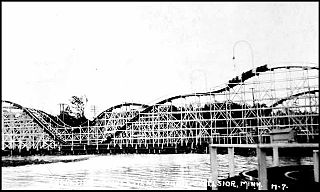
Excelsior Amusement Park was an amusement park on Lake Minnetonka in the town of Excelsior, Minnesota, United States. The park, which operated from 1925 to 1973, was a popular destination for company picnics and day trips from the Twin Cities.
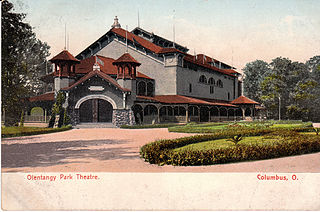
Olentangy Park was a trolley park, a type of amusement park, in Clintonville, Columbus, Ohio, operating from 1880 to 1937.
John A. Miller was an American roller coaster designer and builder, inventor, and businessman. Miller patented over 100 key roller coaster components, and is widely considered the "father of the modern high-speed roller coaster." During his lifetime, he participated in the design of approximately 150 coasters and was a key business partner and mentor to other well-known roller coaster designers, Harry C. Baker and John C. Allen.

Playland was a 10-acre (40,000-square-meter) seaside amusement park located next to Ocean Beach, in the Richmond District at the western edge of San Francisco, California, along Great Highway, bounded by Balboa and Fulton streets. It began as a collection of amusement rides and concessions in the late 19th century, and was preceded by Chutes at the Beach, opened in 1921. Playland closed Labor Day weekend in 1972.

Chance Rides is a roller coaster and amusement ride manufacturer. Originally founded in 1961, the current company was formed on May 16, 2002, when the former Chance Industries Inc. emerged from bankruptcy. The main office and manufacturing facility are located in Wichita, Kansas.

Chippewa Lake Park is an abandoned amusement park located in Chippewa Lake, Ohio, Medina County. It operated from 1878 through 1978, after the final owner, Continental Business Enterprises closed it due to a lack of attendance. The rides and structures were left largely untouched and unmaintained for over 45 years.

Miracle Strip Amusement Park was a theme park located in Panama City Beach, Florida, which operated from 1963 to 2004. The highlight of the park was The Starliner Roller Coaster, an "out-and-back" wooden coaster designed by John Allen upon the park's initial conception. A few other rides lay near the Starliner and a small arcade center and food stands rounded out the fledgling park.
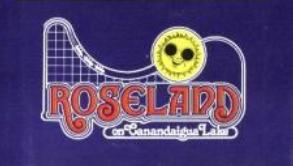
Roseland Park was an amusement park located at 169 Lake Shore Drive in Canandaigua, New York, along the north shore of Canandaigua Lake. Roseland started operation in 1925 under its founder and original owner, William Muar. It continued to operate for 60 years until its closure on September 2, 1985.

Paragon Park was an amusement park located on Nantasket Beach in Hull, Massachusetts. It closed in 1984.
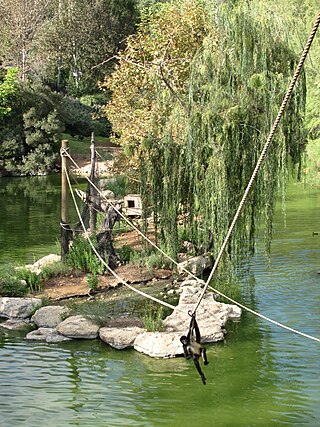
An animal theme park, also known as a zoological theme park, is a combination of an amusement park and a zoo, mainly for entertainment, amusement, and commercial purposes. Many animal theme parks combine classic theme park elements, such as themed entertainment and amusement rides, with classic zoo elements such as live animals confined within enclosures for display. Many times, live animals are utilized and featured as part of amusement rides and attractions found at animal theme parks.

Toboggan is a portable roller coaster that was built by Chance Industries from 1969 to the mid-1970s. The coaster features a small vehicle, holding two people, that climbs vertically inside a hollow steel tower then spirals back down around the same tower. There is a small section of track at the base of the tower with a few small dips and two turns to bring the ride vehicle back to the station. Each vehicle has a single rubber tire with a hydraulic clutch braking system that governs the speed of the vehicle as it descends the tower. The rubber tire engages a center rail that begins halfway through the first spiral. The ride stands 45 feet tall with a track length of 450 feet. A typical ride lasts approximately 70 seconds.




















